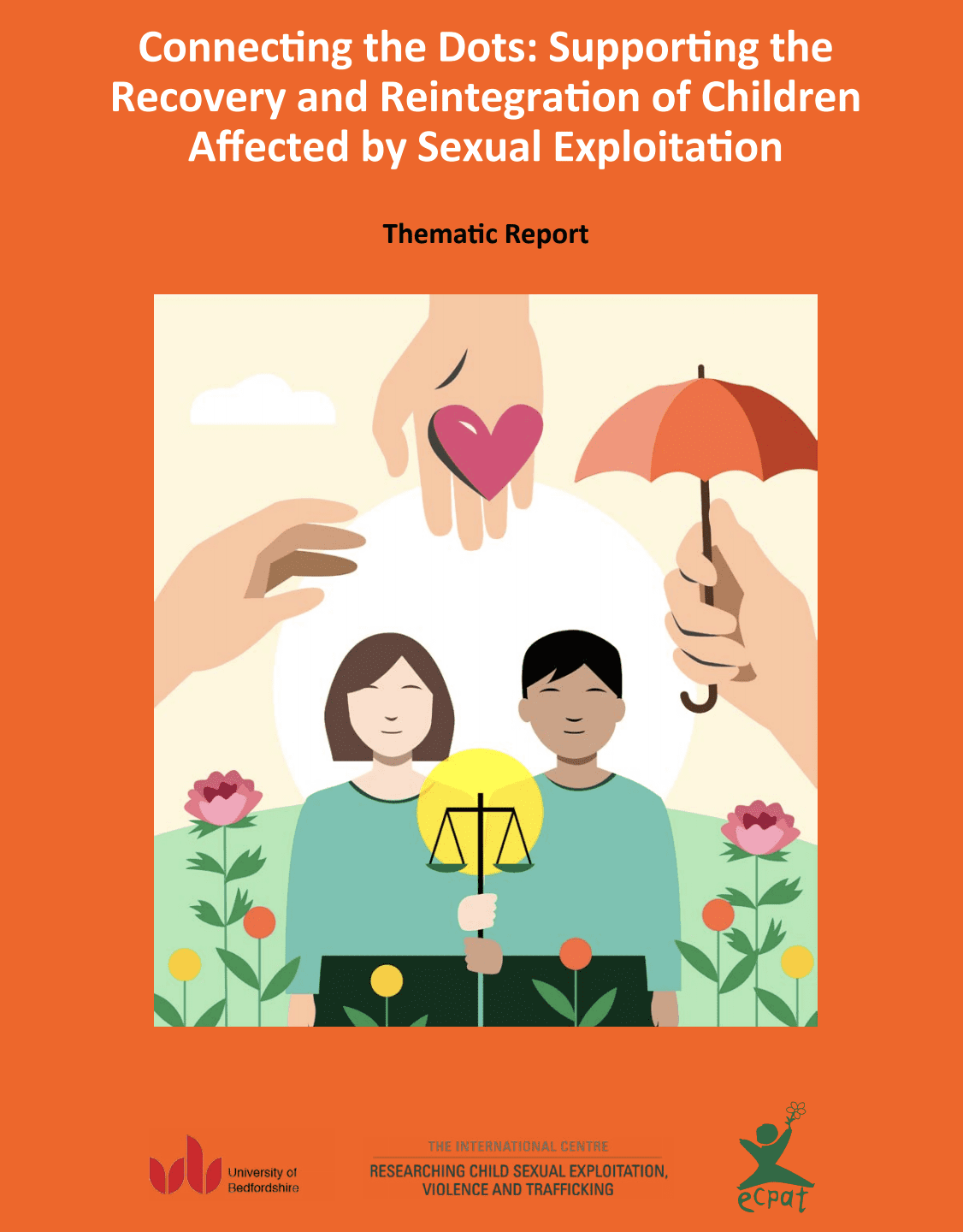
Connecting the Dots: Supporting the Recovery and Reintegration of Children Affected by Sexual Exploitation
Introduction
Over the last 25 years child sexual exploitation (CSE) has become a high priority issue for the international community. Multiple commitments, congresses and the introduction of conventions and protocols have attempted to prevent CSE, prosecute perpetrators and protect victims. Despite these efforts, the ever-changing landscape of exploitation and abuse persists and children continue struggling to access appropriate support and services in line with their rights.
Through the Sustainable Development Goals (SDG), the international community again acknowledged the widespread nature of CSE and set the ambitious target to ‘End abuse, exploitation, trafficking and all forms of violence against and torture of children’ by 2030. Ending abuse and exploitation means not only preventing it in the first place, but ensuring that those affected can access confidential, high quality, consistent, long-term support so that they can overcome these experiences and are not revictimised in the future.
A recent global evidence review focusing on preventing and responding to child sexual abuse and exploitation concluded that ‘robust research and evaluation in this area is seriously lacking, particularly in LMICs [low and middle income countries]’. In high-income countries, there is a similar dearth of evidence-based interventions for children affected by CSE. This means that where recovery and reintegration programmes are designed, funded and implemented, they are not yet grounded on a sound evidence-base.
The lack of evaluation studies also makes it difficult to understand how effective support is, for who, why and in what circumstances. While the research community attempts to address this gap, service providers need to know how best to respond and support children, families and communities currently affected by CSE. This report attempts to fill this gap, drawing on an initial review of the literature and findings from field research carried out in Nepal, Thailand and the Philippines with victims/survivors of CSE and their service providers.10 This report ‘connects the dots’ and pieces together existing evidence on priorities for children affected by CSE in their recovery and reintegration.
The first chapter provides an overview of key definitions and overall context surrounding the recovery and reintegration processes. This chapter also gives a brief overview of the local contexts where the fieldwork, which this report draws on, took place. Chapter two outlines how the report was developed, explaining the methods used for the field research and the initial review of the literature. Chapter three highlights the key barriers that impact children’s ability to access quality care and support.
Chapter four identifies overarching approaches and key principles critical to working with children affected by CSE. Chapters five and six outline the process of case management and the key role of caregivers in supporting children’s recovery and reintegration. Chapters seven to twelve explore the different areas or domains of provision highlighted during the field research and which are echoed in the literature as being necessary or helpful for children during their recovery and reintegration. Chapter thirteen explores the key role of the family and community in supporting children’s reintegration. In conclusion, chapter fourteen summarises the main findings of the report and provides a series of overarching recommendations.
Read more here.
